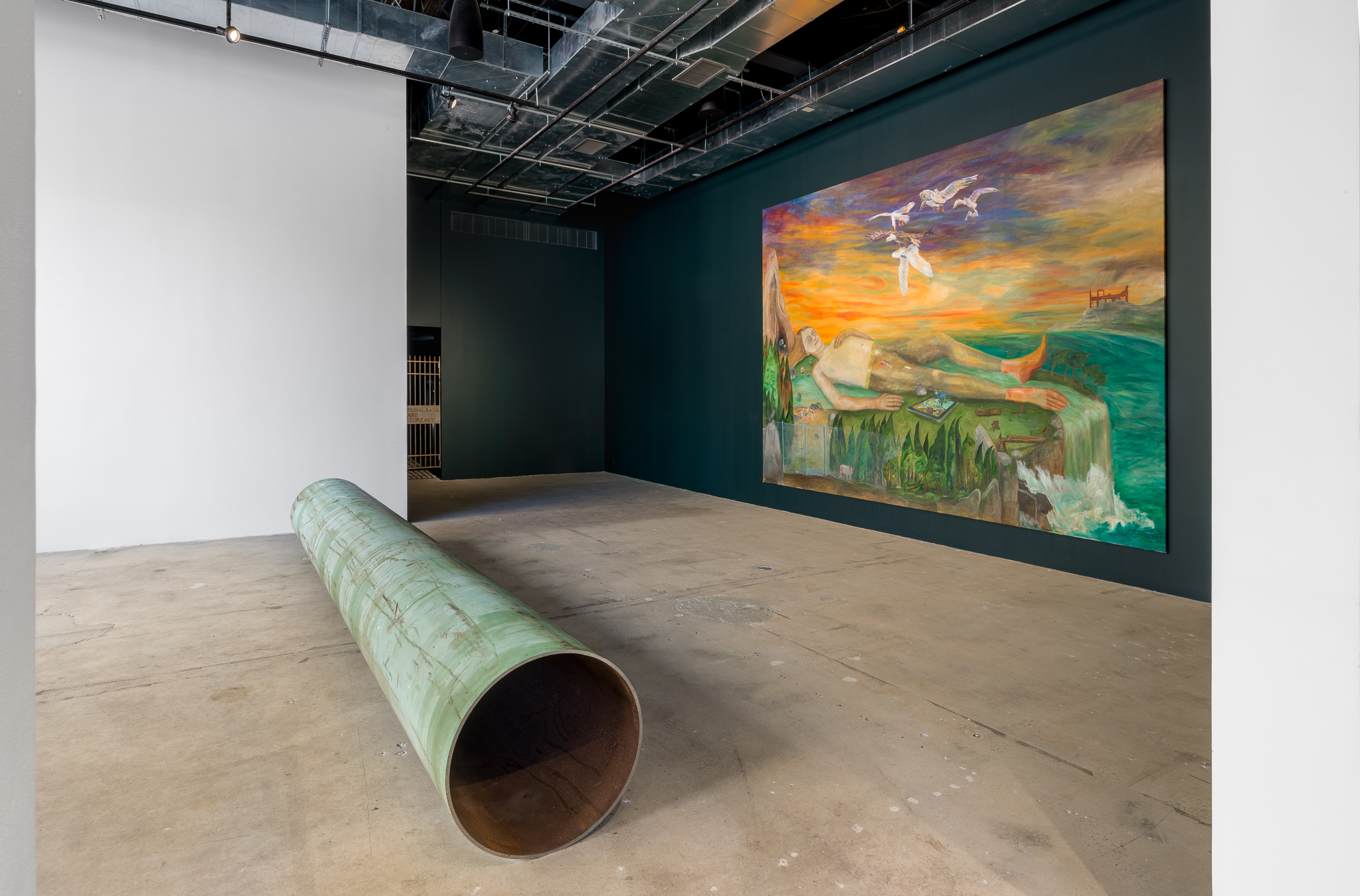Jill Mulleady: Fight-or-Flight | Kaleidoscope
Dec 11 2019

LOLA KRAMER You recently participated in the Venice Biennale with a significant ensemble of thirteen paintings exhibited at the Giardini and the Arsenale. With a solo presentation at Art Basel in-between, you’ve just opened your first New York exhibition, “Fight-or-Flight,” at the Swiss Institute. It’s been a busy year! And yet somehow, each presentation feels different from the previous one.
JILL MULLEADY I try not to repeat myself, and I often play with genres. Initially, there was more of a Symbolist or Surrealist approach. Then I started focusing more on New Objectivity and Social Realism. The New York show is different from anything I’ve done before. I pushed more towards an allegorical narrative.
LK Can you tell me about the allegory?
JM There’s only one painting, and it’s of a more substantial scale, five-by-four meters. It’s called The Bird Watcher (2019). I’ve been looking at Bruegel’s The Land of Cockaigne (1567), and this theme of paradise on Earth that arose during the Renaissance. It’s this idea that in paradise, you’re not working or doing anything but merely indulging. I wanted to create a contemporary version of this. I started to paint this white giant laying on a private island, watching birds. He’s playing with a kind of financial app on an iPad next to him. There are seagulls and an eagle flying above. There’s something cinematographic in the painting, too; it’s a bit like this American entertainment fantasy of superheroes. The artists I’m inspired by, like Mike Kelley or Paul Thek, never played it safe. I’m thinking of how Kelley performed fantasy, how he dealt with Superman and reimagined the planet of Kantor.
LK I can see it. In your color palette, I detect Kryptonite green. And the figure does remind me of Thek’s dead hippie.
JM Whether consciously or not, those things are in my mind. These are artists who are touching on an unconscious pop culture that is in all of us.
LK In the show, the allegory also extends out from the canvas, through sculptural interventions.
JM The show includes a large pipe, installed on the ground, that’s about the size of the painting. It’s a piece of pipeline that’s used to move oil underground across America, and I’m painting rats inside. I want to make them appear from a single perspective, like Holbein’s Ambassadors (1533). The Swiss Institute [building] also used to be a bank, and inside there’s a vault room. It says, “First National Bank and Trust,” but the letters are a bit fucked up. I’m interested in these sculptural interventions as subtle forms of sabotage.
LK Can you tell me about your instinct to include sculpture alongside your paintings in your shows?
JM When I’m doing a solo show, I want to create a mise-en-scène. It’s a form of generosity towards the viewer, in a way, but mostly the space and the sculptural interventions serve a purpose in framing the paintings. At the end of the day, I’m a painter.
LK You mentioned Bruegel and the Renaissance, but when I look at your works, I also think of Bosch’s Garden of Earthly Delights, and this idea that along with all the pleasures of paradise, at its core, it’s also mired in entropy.
JM I was reading this book by TJ Clark, Heaven on Earth. Giotto’s Dream of Joachim (1305) and The Land of Cockaigne are addressed as paintings that show a specific moment where humankind is modified by something beyond. The idea is that there’s something cracking, changing, and a miracle unfolding. I thought it would be a challenge to do that now. What would a painting of heaven on Earth would look like today? Probably like having your private island where you have to do nothing but work on your iPad, making a lot of money, right? (Laughs) I was trying to capture this common dream.
